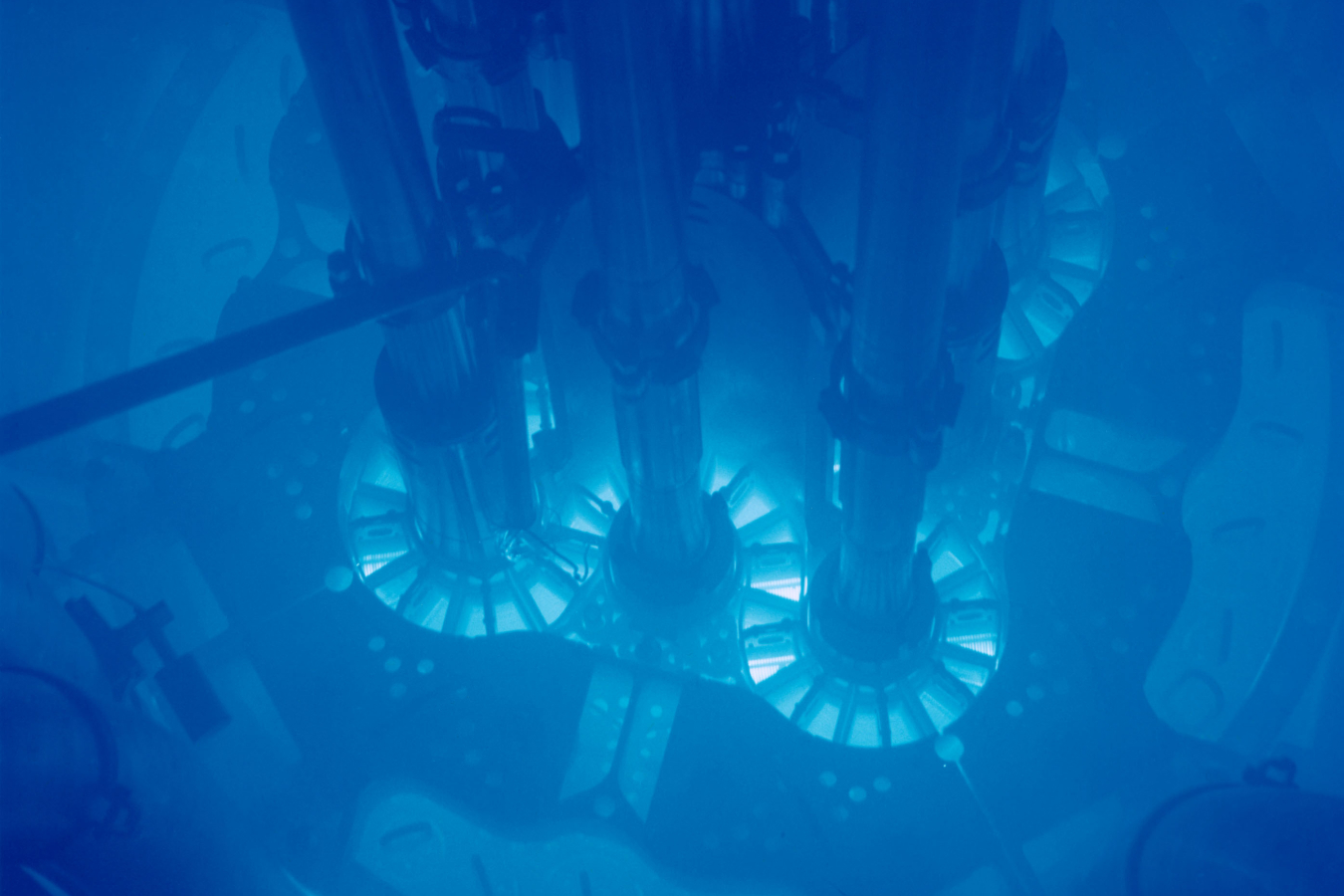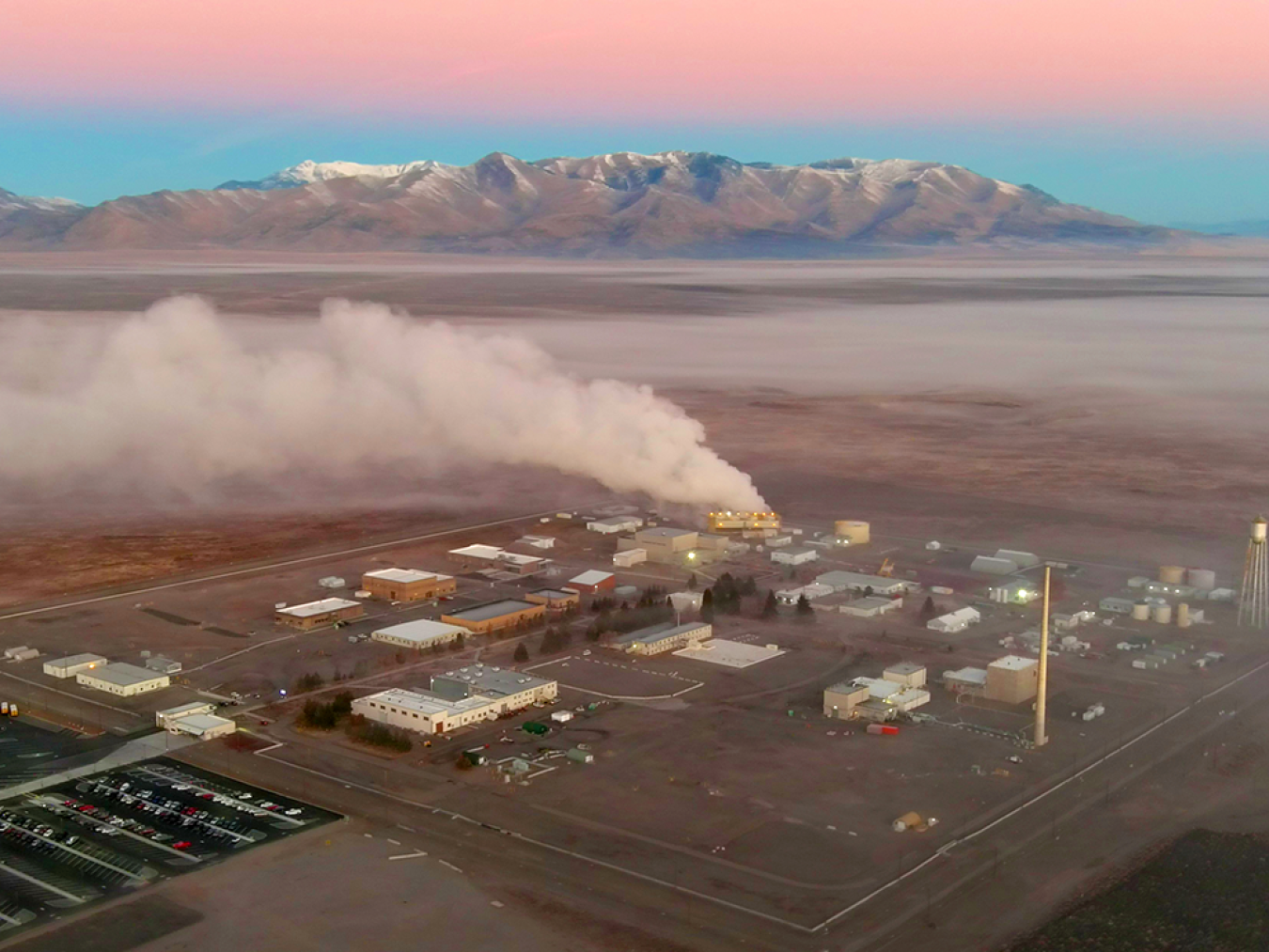The Advanced Test Reactor at Idaho National Laboratory is the largest and most powerful research reactor in the world, helping to advance nuclear technologies.
July 2, 2025The Advanced Test Reactor (ATR) at Idaho National Laboratory is the largest and most powerful research reactor in the world.
It’s been smacking large volume experiments with high-intensity neutrons since 1967 — the same year the Big Mac debuted.
But unlike the Big Mac, ATR doesn’t require a special sauce — just a unique core design that helps researchers accelerate the study of long-term exposure of fuel and materials to the intense radiation inside many different types of reactors.
Hungry for more?
Sink your teeth into these seven fast facts about ATR.
1. ATR is a pressurized water test reactor.
ATR is a unique pressurized water test reactor that operates at low pressure (about 360 psi) and temperature (around 180 degrees Fahrenheit) compared with most nuclear power plant reactors (about 2000-3000 psi and 600 degrees Fahrenheit). Its core is surrounded with a beryllium reflector to help concentrate neutrons on the fuels and materials it is testing.
2. ATR has lots of test positions.
ATR has 77 testing locations in its core region. They vary in size and can handle large test volumes up to 48 inches long and 5 inches in diameter. Six locations have self-contained test loops to replicate the physical environment and coolant (i.e. temperature, pressure, flow and chemistry) of many different types of current and advanced reactors.
3. ATR has a very busy outage schedule.
ATR’s research mission demands a very busy operating schedule, on average performing four 60-day operating cycles each year, with occasional shorter (1-2 week) high-power runs for special experiments. The remainder of the time is needed for planned outages for swapping experiments in and out, refueling, routine maintenance and upgrades. By comparison, current commercial power plants run for 18-24 months between outages.
4. ATR can support dozens of experiments at the same time.

ATR’s unique core design includes 77 testing positions that can be used each cycle,
ATR’s unique core design includes 77 different testing positions that can be used each cycle, providing unmatched versatility in nuclear research. Its paired control cylinders allow the reactor’s corner lobes to operate at different power levels tailored to experimenters’ needs. This makes it possible to conduct dozens of experiments simultaneously — all under different testing conditions.
5. ATR is vital for maintaining U.S. Navy dominance.
Since it came online in 1967, ATR has supported the United States Navy Nuclear Propulsion Program as the only test reactor that can provide the high-power, intense neutron irradiation needed to continue developing and improving its fuel and materials. The Navy remains a prime user of ATR, which helps it achieve fuel performance, longevity and a safe operational record unmatched by any fleet in the world.
6. ATR helps save lives and advance space exploration.
ATR is the only U.S. source of medical-grade high specific activity cobalt-60 — an isotope that is used for cancer treatments. The ATR also helps produce plutonium-238, which is needed to help power deep exploration missions like the Perseverance rover on Mars and the upcoming Dragonfly mission to Saturn’s moon Titan.
7. ATR is a historic landmark.
Fifty-eight years and counting. The ATR complex was named a historic landmark by the American Nuclear Society in 2016 for its countless contributions to nuclear research. DOE plans to keep the test reactor up and running for decades to come.
Learn more about ATR in this fact sheet by Idaho National Laboratory.


